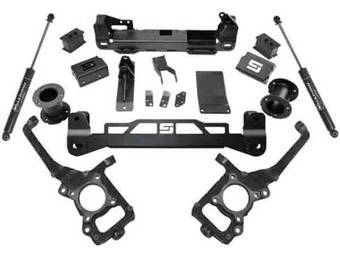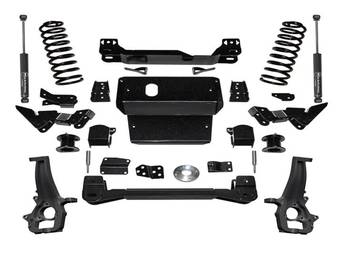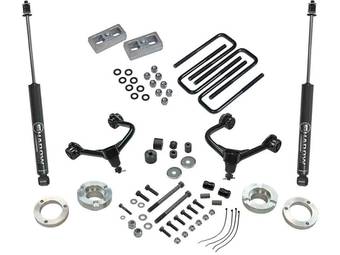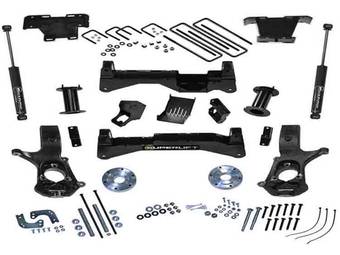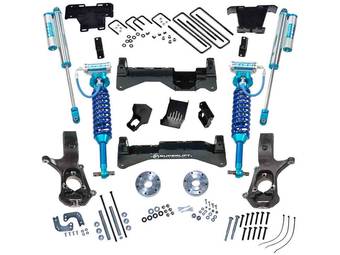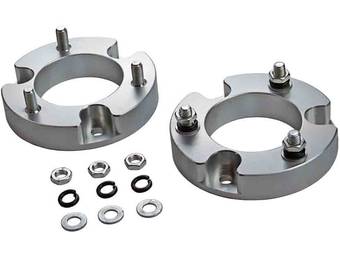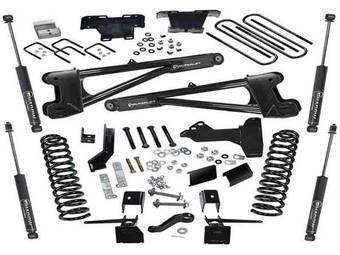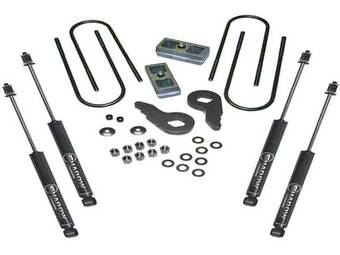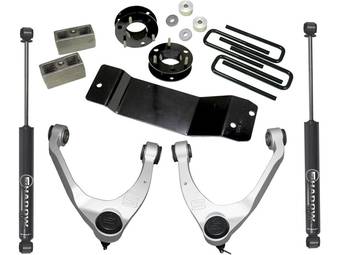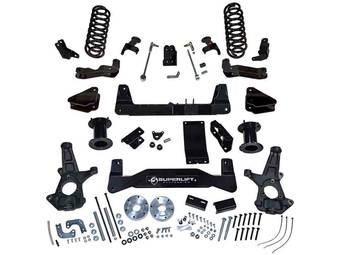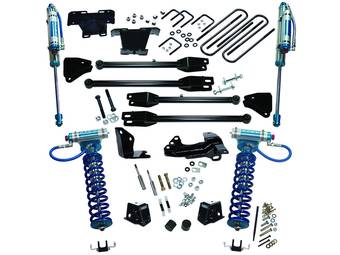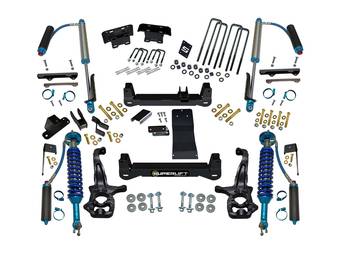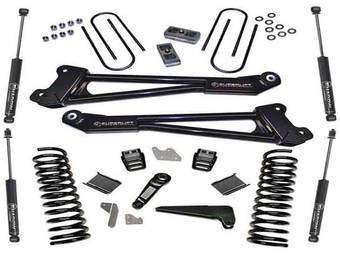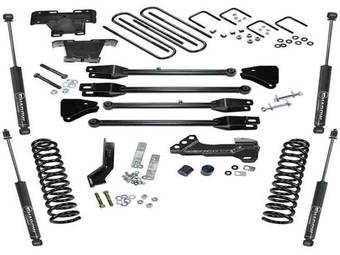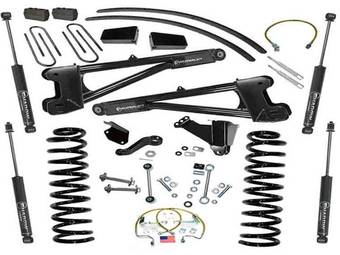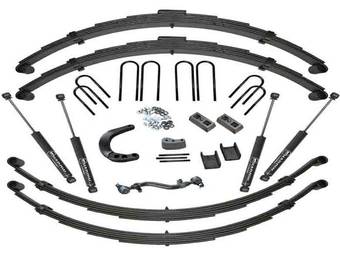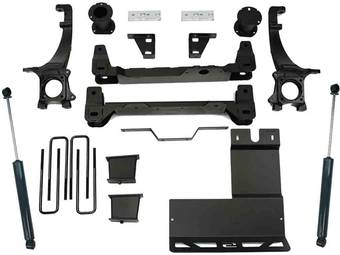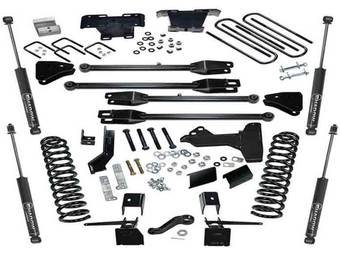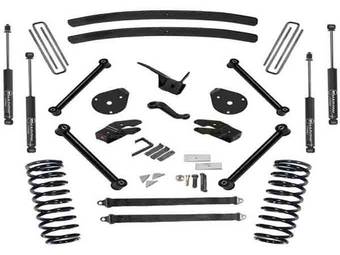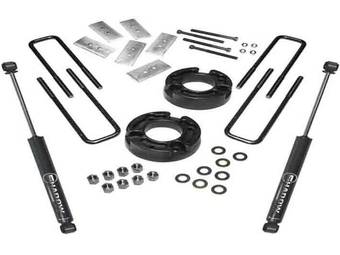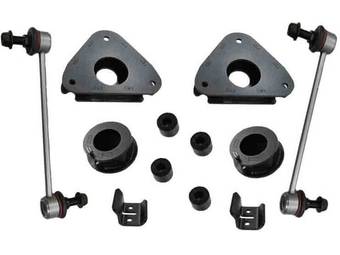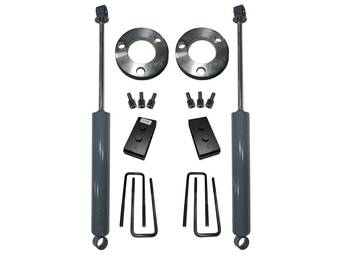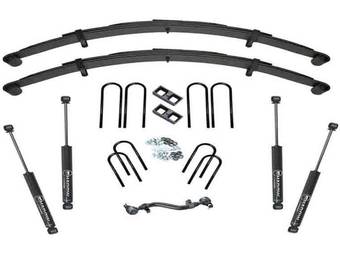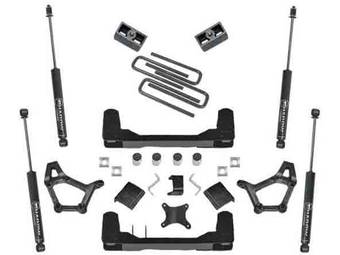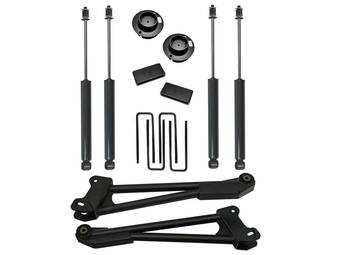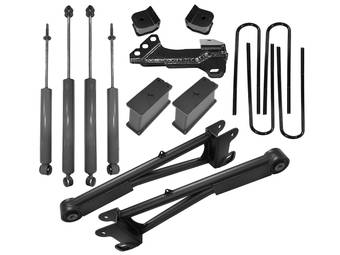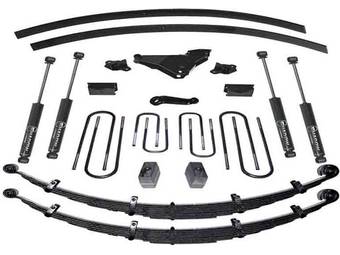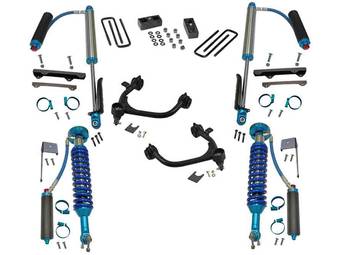Get up to $400 Off Truck Bed Covers – Shop Now
How to Choose a Lift Kit
Updated on Jul 30, 2024
The decisions you make regarding suspension alterations are important ones. Closely evaluate what you have to work with, and think about what you are trying to accomplish. Most of us own trucks, Jeeps or SUVs that serve multiple roles; our vehicle is primarily a daily-driver, with its other duties possibly including hauling, towing and occasionally some off-roading.
Vehicle drivability is defined as: “The sum of a vehicle’s driving traits and mannerisms”. When a vehicle has a multi-use role, the goal is to find the proper balance between on-road drivability, and off-road capability. If you have the luxury of owning a dedicated off-road vehicle, say a rock crawler for example, you can sacrifice higher speed handling traits to maximize suspension articulation.
Suspension is only one leg of the performance triad, you must also address your vehicle’s tires and drivetrain….the key is to get these three vehicle “systems” working together to provide the best possible traction at all times. Hey... if it were cheap and easy, everyone would be doing it correctly!
What suspension lift kit will work best for you? It boils down to these four basic factors:
Vehicle type and factory suspension specifications
What the vehicle will be used for
Desired tire size
Your budget
Because of all of the variables, it’s very possible that a "one type fits all" lift kit is not going to get the job done satisfactorily. No one offers more lift methods and options than Superlift. If you have questions, or think you may need something not listed, contact your local Superlift dealer, or Superlift direct, to discuss your situation in detail.
Over the years, vehicle manufacturers (Ford, GM, etc.) have paid more and more attention to drivability, especially in the area of ride quality. A properly modified, moderately lifted vehicle generally rides and steers as well as factory vehicle. In fact, it is not unusual to noticeably improve drivability, depending on your choice of suspension, shocks and tires. Again, it is a matter of what vehicle you start with and your aftermarket equipment choices. Here are a few “rules of thumb” to keep in mind:
Ride Quality
Our coil spring lift system generally maintain a factory-like ride quality.
Lifted leaf spring equipped vehicles generally ride factory-like or slightly firmer than stock. As spring arch increases so does firmness.
On most vehicles equipped with Independent Front Suspension, ride quality does not noticeably change since the factory torsion bars, coils or struts are not replaced.
Properly valved shocks greatly impact ride quality. Shocks do not provide lift.
Tire type and their operating air pressure - Be sure that tire operating pressures aren’t higher than needed for your vehicle’s weight. For example, a full-size SUV requires more air pressure than a Jeep Wrangler, yet they are commonly equipped with the exact same aftermarket tire. Over-inflation degrades ride quality and induces uneven tire wear. Research what pressure is right for your vehicle’s weight via your tire dealer or the tire manufacturer’s website.
Ride quality is degraded by over-tightening certain suspension components or tightening certain components out of sequence during the installation process. Superlift addresses this in our installation instructions.
Top-Selling Lift Kits & Accessories
Check out some of the top rated products that are field-tested and tough enough for anything your truck, Jeep, or SUV can throw at them.
Different Rear Lift Methods
Rear Block Kits are generally the most popular rear lift method since they afford the best ride quality and are the least expensive. However, spring/axle wrap up can be an issue with some vehicles. For these vehicles, consider utilizing SUPERLIFT add-a-leafs or replacement rear springs.
Add-a-leafs can be used with or without lift blocks, and are recommended to strengthen weak factory springs, and/or when the vehicle is used for heavy hauling or towing. Top-mounted factory overload springs can be retained when using add-a-leafs.
Superlift Superide replacement rear springs are the way to go if the factory springs are overly fatigued or damaged. Attaining lift with new springs, as opposed to blocks, reduces spring/axle wrap-up. Generally, our replacement rear springs' ride quality and spring rate is comparable to a factory heavy-duty spring. Top-mounted factory overloads are not compatible with rear lift springs.
Net Lift Height
Net lift height varies slightly depending on which factory suspension package the vehicle is equipped with and its condition.
Superlift’s stated lift height for a given lift kit is for front lift. Generally front lift is more than rear lift in order achieve a “closer to level” front-to-rear attitude.
The presence of additional weight, such as a winch, heavy-duty bumpers, storage boxes, extra fuel capacity, etc., reduces lift height.
On vehicles equipped with Independent Front Suspension, the use of exceptionally wide tires and wheels exerts additional leverage on the vehicle’s springs. This leverage results in a slight amount of ride height loss. With torsion bar-equipped vehicles, the available torsion bar adjustment may not be adequate to offset this leverage, and now heavier rated bars may be required. For other suspension types (TTB, strut), Superlift offers products that will restore this lost height.
VIDEO: Top Lifted Trucks of SEMA 2016
Shop Now
RealTruck is your home for the best products to outfit your build for unforgettable adventures.
Wheels and Tires | Interior Lights | Steering Upgrades | Hitches and Towing
See More Guide Articles Here...
- …
Join over 2 million RealTruck people
Get exclusive savings, insider information, and the latest RealTruck articles sent straight to your inbox.
